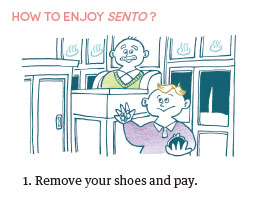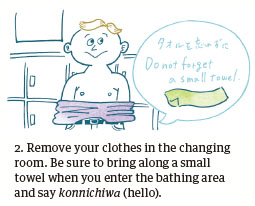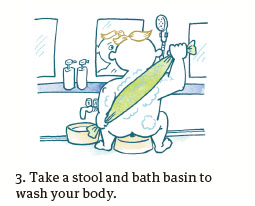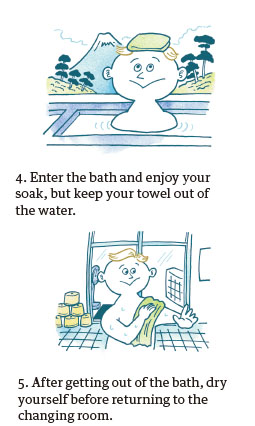Home > Highlighting JAPAN > Highlighting Japan March 2019 > From Hot Springs to Art: Japan’s Bath Culture
Highlighting JAPAN

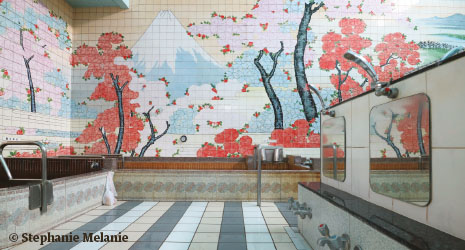
Public Baths 101 for Visitors to Japan
Spreading throughout Japan from the early Edo Period (1603-1867), Japanese people have loved sento public baths. As the popularity of hot springs grows, these baths have also caught the attention of many international visitors. French sento journalist Stephanie Crohin gives tips about Japanese bathing manners for travelers.
Stephanie Crohin first discovered the charms of Japanese public baths in 2008 while she was an exchange student at Rikkyo University in Tokyo. “A friend who was writing an essay about public baths invited me,” she recalls. “In France, it isn’t customary to bathe with others, and since my spoken Japanese wasn’t great at the time I was nervous at first. But the regulars and the owner were very kind to me. After that, I understood that sento are places that provide warmth and relaxation to people, and began to visit more often.”
In 2012, Crohin returned to Japan and began visiting more public baths. She began going to sento throughout Japan and posting information on her website and Instagram. In the end, she became an independent “sento journalist” and reports the wonders of public baths to non-Japanese speakers on English websites and via social media. She has published books on the subject, appeared in various media, and has also given lectures and planned public bath tours for people studying abroad in Japan. As an aficionado, Crohin is the perfect person to ask about proper sento bathing manners.
“First, you remove your shoes,” she says. “Then you pay at the counter and go to the changing room. Remove your clothes and go to the bath area, but make sure to bring a small towel with you. Also, be sure to say konnichiwa (hello) when entering. By entering with a greeting, you can get close with the other people in the bath.”
The next step, she relates, is to take a stool and basin and find a spot by the showers to wash yourself before you enter the bath. “In Japan it is customary to get clean before entering, since other people bathe in the same bathtub,” Crohin advises. “While you bathe, it is bad manners to put your towel into the bathwater. Lastly, when exiting the bathing space, make sure to dry yourself quickly so you don’t drip water all over the changing room floor.”
The common factor among all the rules is to not disturb others. “A public bath is a place where people share space and time, so it is necessary to consider their comfort as well. While tattoos are often a concern for visitors from abroad, as long as it is a fashionable tattoo (and not a gang symbol), it usually isn’t an issue at most sento.”
Crohin hopes more people will enjoy Japan’s public baths while minding their manners. “Popular hot springs resorts are nice, but sento have their own individual charms that should not be missed,” she notes. “You can get close to the locals, who may share some secret spots to visit or foodie tips that aren’t posted on the Internet. The artistic murals of Mount Fuji, castles or traditional dances painted on the walls of the baths are also a must-see. The exteriors of some public baths showcase traditional Japanese architectural skills used in Buddhist temples and Shinto shrines and are worth a look. If you visit a public bath that doesn’t suit you, just try a different one. Every bath has unique traits, and there will surely be one that you like.”
Despite having so many charms, the price of visiting a sento is extremely reasonable: in Tokyo as of the end of 2018, for example, it was just 460 yen. Crohin emphasizes that you get more than you pay for, so why not take a bath during your trip to Japan?
© 2009 Cabinet Office, Government of Japan
